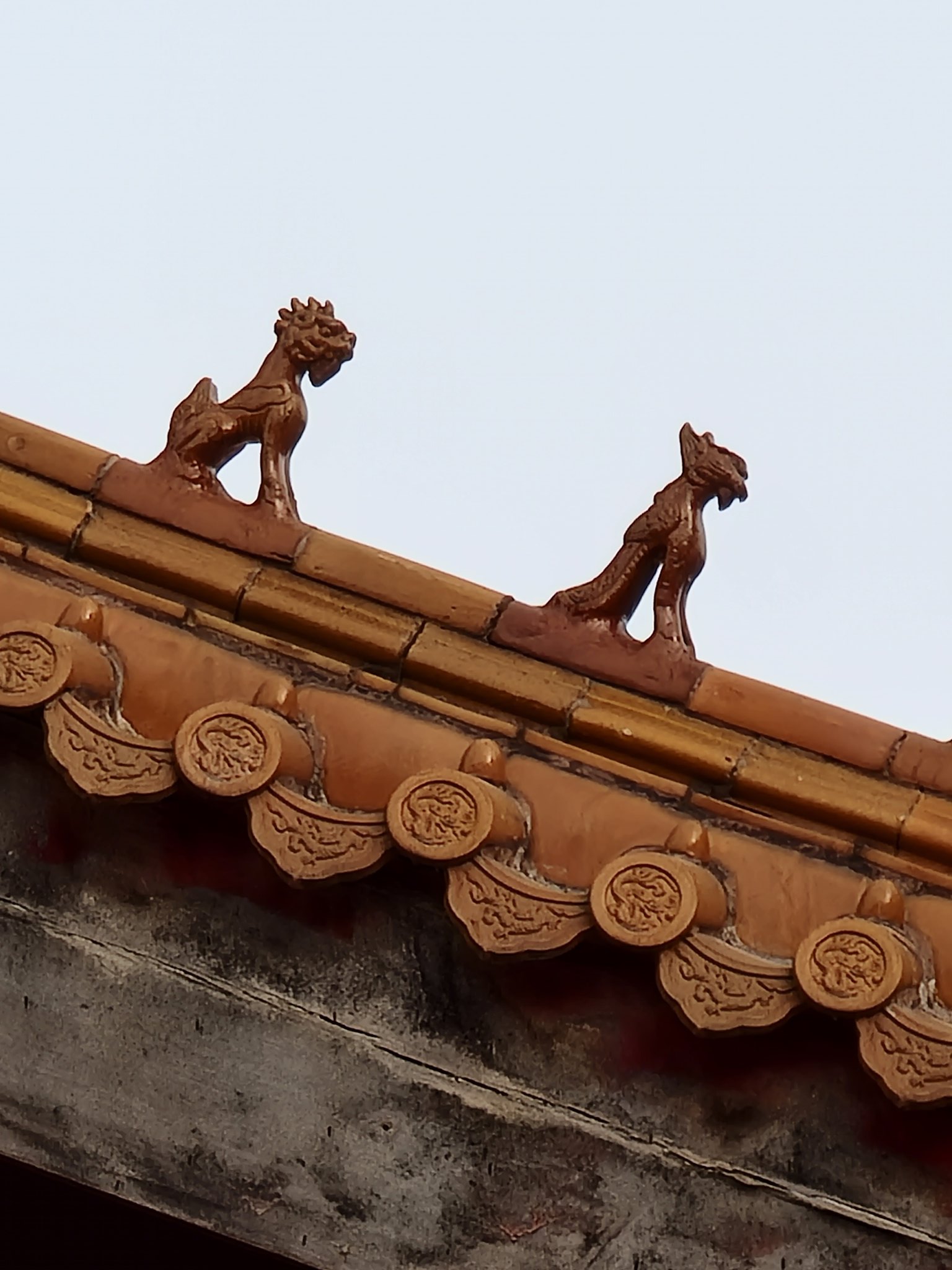-
 Elaboramos várias listas de Smartphones Android por segmentos de preços: Inferior a 200€. Entre 200 e 300€. 300 a 500€. Acima de 500€. Aceitam-se sugestões na melhoria das listas e em casos de dúvida continua a usar o questionário num novo tópico.
Elaboramos várias listas de Smartphones Android por segmentos de preços: Inferior a 200€. Entre 200 e 300€. 300 a 500€. Acima de 500€. Aceitam-se sugestões na melhoria das listas e em casos de dúvida continua a usar o questionário num novo tópico.
You are using an out of date browser. It may not display this or other websites correctly.
You should upgrade or use an alternative browser.
You should upgrade or use an alternative browser.
Xiaomi Mi 11, 11 Pro e 11 Ultra
- Autor do tópico gif
- Data Início
P4rthen0n
Power Member
Agora no evento Global parece haver 4 modelos para fora da China:
Mi 11 Ultra - a partir de 1200€
Mi 11
Mi 11i (parece ser o Redmi K40 Pro Plus) - a partir de 650€, incluíndo Amazon
Mi Lite - a partir de 300€ (SD732G) e 370€ (SD780G)
O Mi 11 Pro parece ter ficado fora da lista Global.
Mi 11 Ultra - a partir de 1200€
Mi 11
Mi 11i (parece ser o Redmi K40 Pro Plus) - a partir de 650€, incluíndo Amazon
Mi Lite - a partir de 300€ (SD732G) e 370€ (SD780G)
O Mi 11 Pro parece ter ficado fora da lista Global.
Última edição:
LeonHeart
Power Member
O Ultra é 1199Agora no evento Global parece haver 4 modelos para fora da China:
Mi 11 Ultra - a partir de 1100€
Mi 11
Mi 11i (parece ser o Redmi K40 Plus Pro) - a partir de 650€, incluíndo Amazon
Mi Lite
O Mi 11 Pro parece ter ficado fora da lista Global.
CorleonePT
Power Member
Eu fico parvo com a quantidade de Xiaomis que saem no mercado. Além disso ainda temos os POCO, Redmi... como é que uma pessoa se consegue orientar com tanta escolha?
Falo por mim, claro. Mas, neste aspecto, acho que a Google e a Apple são as mais correctas. 2/3 modelos por ano é o suficiente.
Falo por mim, claro. Mas, neste aspecto, acho que a Google e a Apple são as mais correctas. 2/3 modelos por ano é o suficiente.
Xiaomi Mi 11 Pro debuts with Snapdragon 888 and Samsung’s GN2 50MP sensor
Xiaomi kicked off its Mega launch event in China earlier today and the first device to be announced on stage was the Mi 11 Pro. Xiaomi CEO Lei Jun described the phone as the “King of Android” and it certainly boasts some top-notch specs.

The front is dominated by a 6.81-inch quad curved AMOLED display QHD resolution and 120Hz refresh rate and Dolby Vision. The panel is protected by Corning’s Gorilla Glass Victus and comes with a pre-applied quad curved screen protector. The Mi 11 Pro also boasts dual stereo speakers tuned by Harman Kardon and packs a tiny punch-hole cutout for the 20MP selfie camera.

Speaking of cameras the Mi 11 Pro is the first device to pack Samsung’s 50MP GN2 camera sensor. The massive 1/1.2” sized module is the largest sensor put in a smartphone and boasts 1.4μm-sized pixels, Dual Pixel Pro AF, Stagger HDR and ISO fusion. You’ll also be able to capture 8K video straight from the main cam.
Samsung GN2 camera sensor



In addition, you get a periscope module with 5x optical (50x digital) zoom and OIS. There’s also a 13MP ultrawide snapper.
As expected the Mi 11 Pro utilizes the Snapdragon 888 chipset. Xiaomi boasted improved thermal management with class-leading heat dissipation thanks to its large 150mm vapor chamber and accompanying copper hear sinks.
Powering the Mi 11 Pro is a 5,000 mAh battery but it’s not just your run-of-the-mill battery. Xiaomi went with a Silicon Oxygen anode cell which boasts higher density, better conductivity and faster charging in a slimmer profile.
Mi 11 Pro battery, charging and cooling



The same battery tech is being used in electric cars. You get 67W wired and 67W wireless charging both of which take just 36 minutes for a full charge.
The software front is covered by MIUI 12.5 based on Android 11. The phone is IP68 certified and packs an IR blaster. Color options include green, black and purple.

The Mi 11 Pro in its 8/128GB trim retails for CNY 4,999 ($762). It’s also available in 8/256GB version for CNY 5,299 ($807) as well as a 12/256GB model for CNY 5,699 ($868). Official sales in China start on April 2.
Xiaomi is offering two packaging options with a normal box that also bundles the 67W charger and cable as well as an environmentally-friendly version without a charger and cable in the box. Both packaging options cost the same so it's up to the buyer to decide which version is more suitable.
Mi 11 Pro packing options


Xiaomi also introduced a new 80W wireless charger pad and similarly powered charger stand. The pad packs 19 coils that can move around to charge up to 3 devices, while the stand only does one but supports both portrait and horizontal orientation. They both com with a 120W power adapter - pricing is set at CNY 599 ($91) for the pad and CNY499 ($76) for the stand.

Xiaomi kicked off its Mega launch event in China earlier today and the first device to be announced on stage was the Mi 11 Pro. Xiaomi CEO Lei Jun described the phone as the “King of Android” and it certainly boasts some top-notch specs.

The front is dominated by a 6.81-inch quad curved AMOLED display QHD resolution and 120Hz refresh rate and Dolby Vision. The panel is protected by Corning’s Gorilla Glass Victus and comes with a pre-applied quad curved screen protector. The Mi 11 Pro also boasts dual stereo speakers tuned by Harman Kardon and packs a tiny punch-hole cutout for the 20MP selfie camera.

Speaking of cameras the Mi 11 Pro is the first device to pack Samsung’s 50MP GN2 camera sensor. The massive 1/1.2” sized module is the largest sensor put in a smartphone and boasts 1.4μm-sized pixels, Dual Pixel Pro AF, Stagger HDR and ISO fusion. You’ll also be able to capture 8K video straight from the main cam.
Samsung GN2 camera sensor



In addition, you get a periscope module with 5x optical (50x digital) zoom and OIS. There’s also a 13MP ultrawide snapper.
As expected the Mi 11 Pro utilizes the Snapdragon 888 chipset. Xiaomi boasted improved thermal management with class-leading heat dissipation thanks to its large 150mm vapor chamber and accompanying copper hear sinks.
Powering the Mi 11 Pro is a 5,000 mAh battery but it’s not just your run-of-the-mill battery. Xiaomi went with a Silicon Oxygen anode cell which boasts higher density, better conductivity and faster charging in a slimmer profile.
Mi 11 Pro battery, charging and cooling



The same battery tech is being used in electric cars. You get 67W wired and 67W wireless charging both of which take just 36 minutes for a full charge.
The software front is covered by MIUI 12.5 based on Android 11. The phone is IP68 certified and packs an IR blaster. Color options include green, black and purple.

The Mi 11 Pro in its 8/128GB trim retails for CNY 4,999 ($762). It’s also available in 8/256GB version for CNY 5,299 ($807) as well as a 12/256GB model for CNY 5,699 ($868). Official sales in China start on April 2.
Xiaomi is offering two packaging options with a normal box that also bundles the 67W charger and cable as well as an environmentally-friendly version without a charger and cable in the box. Both packaging options cost the same so it's up to the buyer to decide which version is more suitable.
Mi 11 Pro packing options


Xiaomi also introduced a new 80W wireless charger pad and similarly powered charger stand. The pad packs 19 coils that can move around to charge up to 3 devices, while the stand only does one but supports both portrait and horizontal orientation. They both com with a 120W power adapter - pricing is set at CNY 599 ($91) for the pad and CNY499 ($76) for the stand.

Ricardoxd
Power Member
LeonHeart
Power Member
Este MI 11 Ultra é um máquinão autêntico...
Vêm algum ponto menos bom nele?
A estética traseira ahah xD
Para ficar perfeito, retirava aquele mini ecrã que ninguem vai usar pois é demasiado pequeno para perceber bem as selfies, e metia lhe uma telefoto de 3x óptico. E usavam o periscopio da samsung 10x óptico em vez do da xiaomi de 5x, onde cabia bem naquele espaço deixado pelo ecrã.
Mas não deixa de estar praticamente perfeito.
P4rthen0n
Power Member
O ecrã é curvo, em vez de ser plano.Este MI 11 Ultra é um máquinão autêntico...
Vêm algum ponto menos bom nele?
Não tem card slot.
Não tem radio FM nem 3.5mm jack.
A câmara frontal não tem OIS.
Também não tem ultrawide frontal (só Huaweis e Iphones é que têm actualmente).
Não tem Face ID.
Dá sempre para apontar isto ou aquilo. No entanto, eu diria que parece ser claramente o melhor telemóvel disponível actualmente, à semelhança do que o Mi 10 Ultra foi no ano passado.
LeonHeart
Power Member
O ecrã é curvo, em vez de ser plano.
Não tem card slot.
Não tem radio FM nem 3.5mm jack.
A câmara frontal não tem OIS.
Também não tem ultrawide frontal (só Huaweis e Iphones é que têm actualmente).
Não tem Face ID.
Dá sempre para apontar isto ou aquilo. No entanto, eu diria que parece ser claramente o melhor telemóvel disponível actualmente, à semelhança do que o Mi 10 Ultra foi no ano passado.
Melhor é relativo, acrescentaria ai na lista: se metermos a questão de software e updates, a xiaomi perde para um s21 Ultra.
São ambos bons, com os seus pros e contras, mas tambem concordo que tirando estes dois não há mais nenhum
LeonHeart
Power Member
E é por isso que cada vez mais a dxomark se enterra mais:
30x mi 11 ultra

100x mi 11 ultra

S21 Ultra 30x

S21 Ultra 100x:

Claramente o periscópio do s21 ultra está um passo á frente, no entanto o dxomark deu menos nota a este
Isto relembrando que ontem o dxomark meteu o mi 11 ultra como o rei de todas as categorias, incluindo zoom XDDDDDDDDDD
Fonte: Mais comparações: https://twitter.com/UniverseIce
30x mi 11 ultra

100x mi 11 ultra

S21 Ultra 30x

S21 Ultra 100x:

Claramente o periscópio do s21 ultra está um passo á frente, no entanto o dxomark deu menos nota a este

Isto relembrando que ontem o dxomark meteu o mi 11 ultra como o rei de todas as categorias, incluindo zoom XDDDDDDDDDD
Fonte: Mais comparações: https://twitter.com/UniverseIce
LeonHeart
Power Member
JXulo
Power Member
Porque os MP não são o que define a qualidade de uma câmara.sabem me dizer porque o mi 11 tem a camara 108MP, e o Mi 11 pro tem 50MP?
megabbyte
Power Member
sim eu sei.. mas é a mm gama.. daí não ser habitual..Porque os MP não são o que define a qualidade de uma câmara.
megabbyte
Power Member
é claro que os MP não querem dizer nada, só acho estranho por uma questão de marketing, o Pro, que saiu depois, vir com 50MP.. entendia se fosse ao contrário.. mas vale o que vale.. tenho o iphone 12 pro e tem 12MPNão acompanhei este modelo específico mas estou a assumir que o 11 normal não seja da mesma gama que o pro, e que o ultra seja ainda acima deste. Penso que é o normal?

